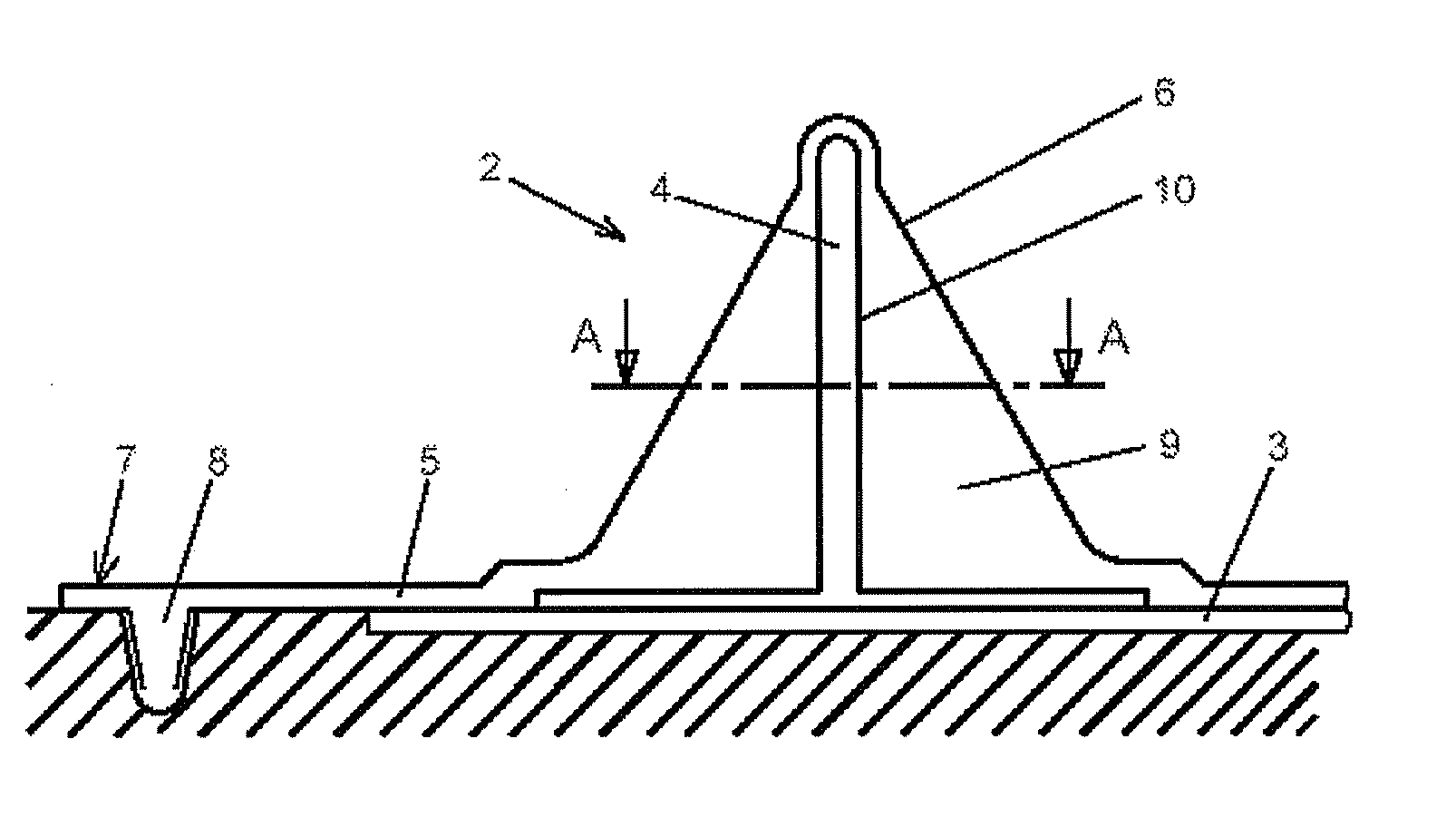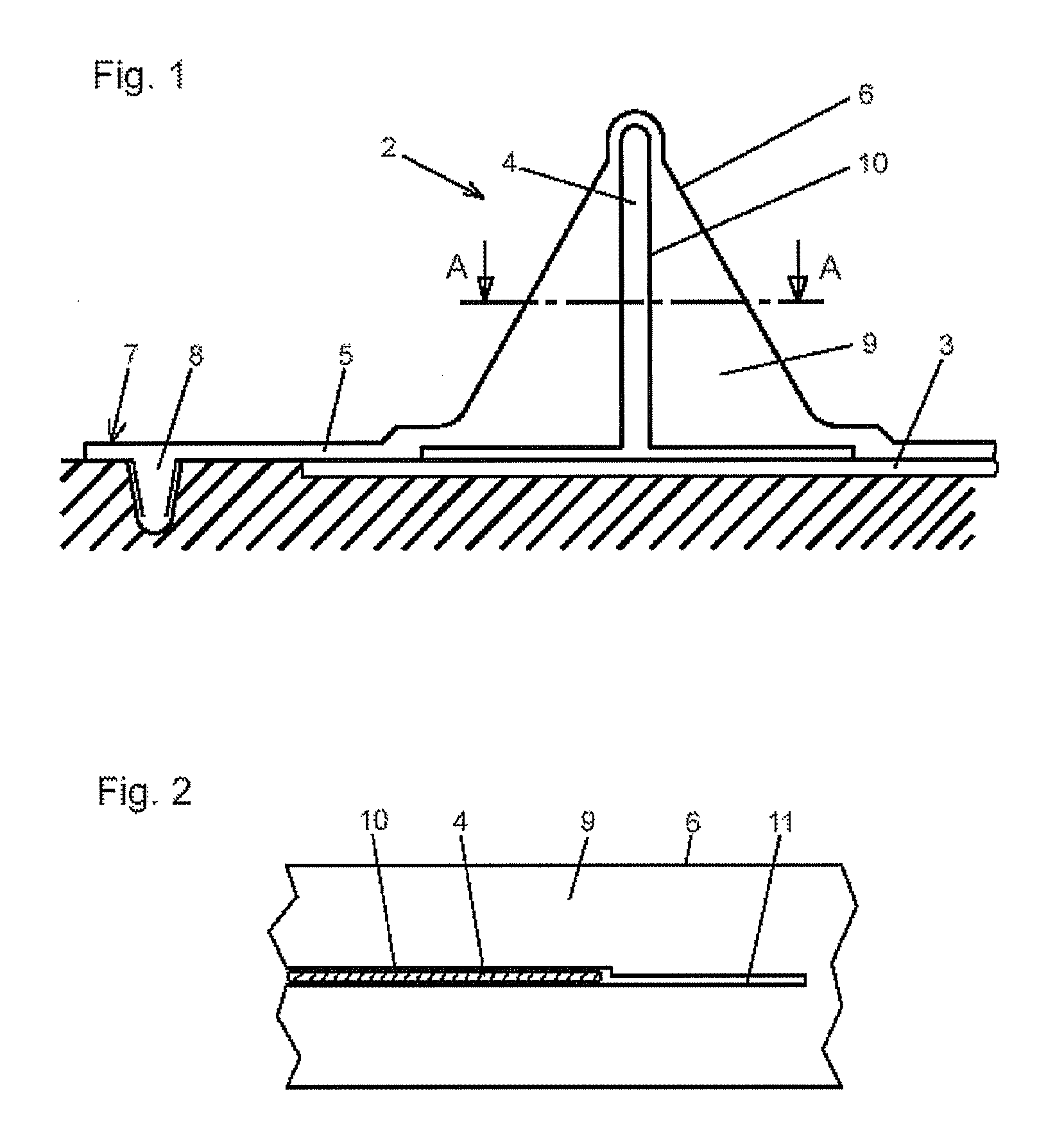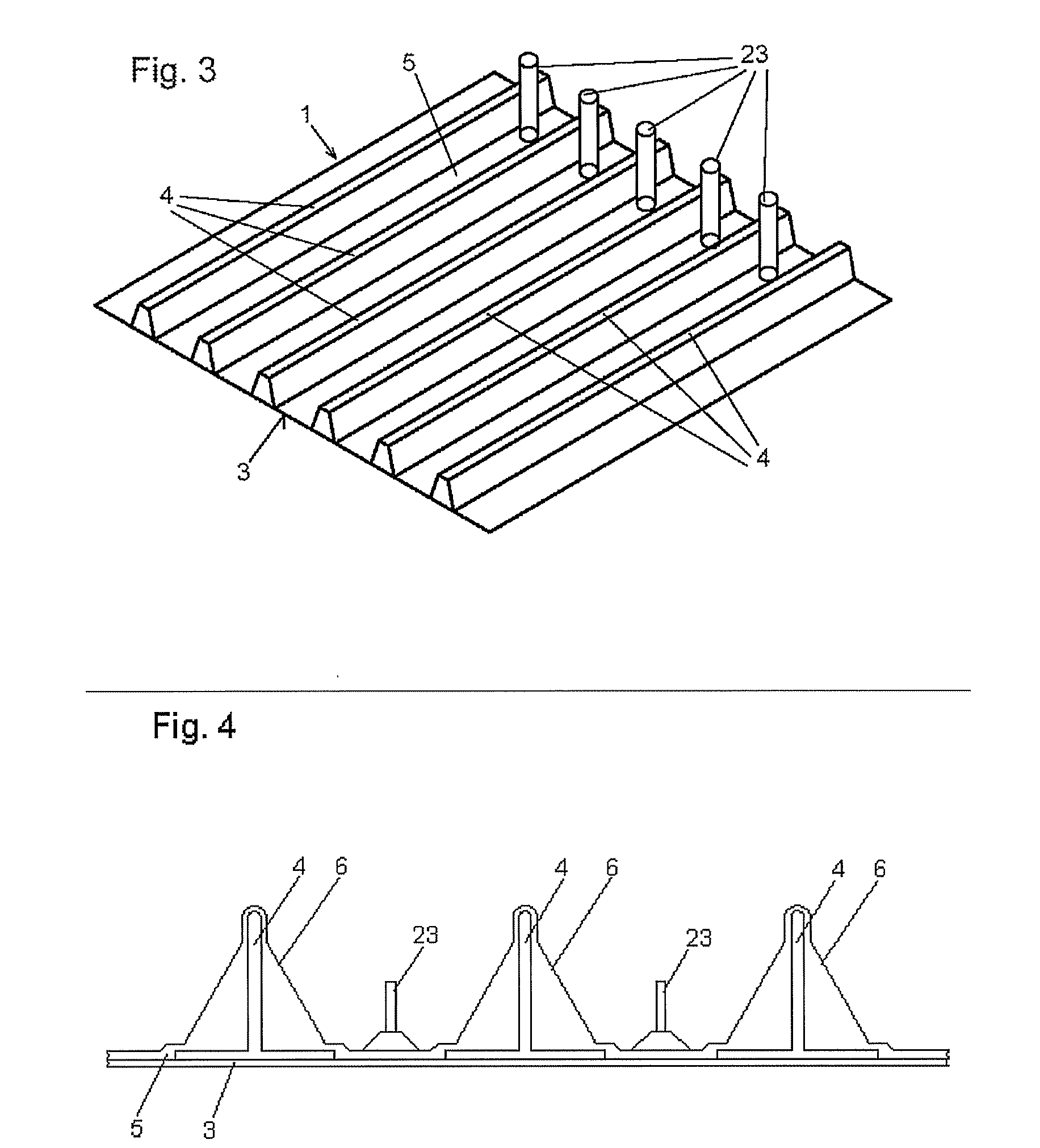Method for reinforcing a fibre composite component and a vacuum mat and arrangement for producing a reinforced fibre composite component
a technology of fibre composite components and vacuum mats, which is applied in the direction of applications, manufacturing tools, food shaping, etc., can solve the problems of time-consuming, component weight increase, and the wrapping process of components
- Summary
- Abstract
- Description
- Claims
- Application Information
AI Technical Summary
Benefits of technology
Problems solved by technology
Method used
Image
Examples
first embodiment
[0035]FIG. 1 is a schematic cross-sectional view of a mould portion 2 of a fibre composite component portion 3 of a fibre composite component 1 (see FIG. 3) with a vacuum mat 5 according to the invention with a receiving portion 6.
[0036]The fibre composite component portion 3 is arranged here on a base plate 24 of a production arrangement (see FIG. 9), which is described in more detail further below, and is provided for reinforcing by a reinforcing element 4, in this case a T-stringer by a vacuum infusion process in the illustrated mould portion 2.
[0037]For this purpose, the reinforcing element 4 was previously introduced in a different location into a recess 10, compatible with the reinforcing element 4, of the receiving portion 6 of the vacuum mat 5 and is completely enclosed by said recess 10. In this case, the vacuum mat 5 is produced from silicone. In the receiving portion 6, the silicone material as a receiving body 9 surrounds the reinforcing element 4. Before the fibre compo...
second embodiment
[0041]Only one reinforcing element 4 is shown in FIG. 1 and is described, but a plurality of reinforcing elements 4 can be required for reinforcing a fibre composite component 1, as FIG. 3 shows in a perspective plan view of an exemplary fibre composite component 1 with mould portions 2 with the vacuum mat 5 according to the invention.
[0042]In FIG. 3, six reinforcing elements 4 are arranged on the fibre composite component portion 3 of the fibre composite component 1 and are covered by the vacuum mat 5 which, in this case, has a recess 10 for each reinforcing element 4. Furthermore, in this second embodiment, the vacuum mat 5 is fitted with closable air supply means 23, through which air or gas is blown in between the vacuum mat 5 and the fibre composite component portion 3 when the vacuum mat 5 is removed from the mould in order to facilitate the removal from the mould. In this respect, the incisions, show in FIG. 2, are widened by the air which is blown in and thus allow the recei...
PUM
| Property | Measurement | Unit |
|---|---|---|
| Stiffness | aaaaa | aaaaa |
| Vacuum | aaaaa | aaaaa |
Abstract
Description
Claims
Application Information
 Login to View More
Login to View More - R&D
- Intellectual Property
- Life Sciences
- Materials
- Tech Scout
- Unparalleled Data Quality
- Higher Quality Content
- 60% Fewer Hallucinations
Browse by: Latest US Patents, China's latest patents, Technical Efficacy Thesaurus, Application Domain, Technology Topic, Popular Technical Reports.
© 2025 PatSnap. All rights reserved.Legal|Privacy policy|Modern Slavery Act Transparency Statement|Sitemap|About US| Contact US: help@patsnap.com



